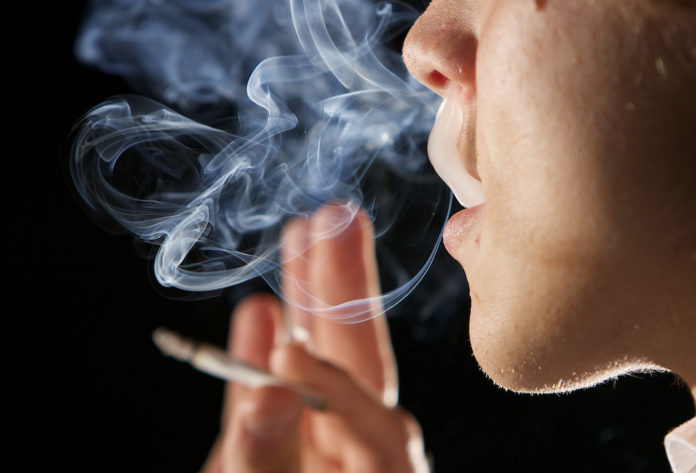As we move towards the legalization of recreational cannabis in Canada, many institutions are facing challenges regarding usage. While many universities provide designated consumption areas for alcohol and tobacco, they are struggling with cannabis as a unique substance.
Those who would want to completely ban the smoking of cannabis offer a variety of arguments, but many of them are based on half-truths and obfuscation. Here is a more nuanced look at some of these claims.
-
The State of California has labelled cannabis smoke as a carcinogen.
True, but misleading.
The Environmental Protection agency of California has identified cannabis smoke as a carcinogen. However, since that time we have had numerous large epidemiological studies which have not found any link with head, neck or lung cancers.
The evidence suggests that smoking cannabis does not increase the risk for certain cancers (i.e., lung, head and neck) in adults. – National Academy of Medicine, 2017
California is perhaps less rational than other jurisdiction regarding cancer warnings. The State is currently facing challenges for adding cancer warnings to coffee due to the presence of acrylamide. According to California regulations, if you want to avoid cancer during your visit there, you should avoid hotels, amusement parks, coffee, alcohol and tuna, which may prompt tourists to seek a less risk averse destination.
The International Agency for Research on Cancer provides a more rational look at cancer risk. Their list of Group 1 agents strongly linked to cancer in humans includes both first and second hand tobacco smoke, along with asbestos, plutonium, alcohol and bacon. In 2014, the IARC made a list of possible newly carcinogens to investigate; cannabis smoke was thought to have minimal evidence of a carcinogen and was rated at lower priority for further investigation than obesity, shift work, lack of physical activity and coffee.
While the literature pointing to cannabis smoke as a carcinogenic is weak, there is damning evidence that alcohol is a potent carcinogen, resulting in over 10 000 cancer diagnoses per year in Canada. Despite this known risk, recent efforts to label alcohol as a carcinogen were defeated by the alcohol industry in Canada. In addition, many universities in Canada still provide outdoor gazebos as designated consumption sites for tobacco, a substance that kills 37 000 Canadians every year.
-
Cannabis smoke contains the same toxic compounds as tobacco smoke.
True. And yet despite this, the effect on the user are quite different.
While tobacco is clearly linked to the development of lung cancer and COPD, cannabis smoke does not appear to cause either. The reason for this continues to baffle scientists. One thought is that nicotine from cigarettes paralyze the cilia of the respiratory tract, prolonging exposure of these compounds in the lungs. Another conjecture is that the anti-cancer and anti-inflammatory properties of THC and CBD help to protect the user against these diseases normally caused by smoking.
-
“One minute of marijuana secondhand smoke exposure substantially impairs vascular endothelial function.” (in rats)
True. But rats aren’t people.
This study comes from the lab of Stanton Glantz, an anti smoking advocate and author of a recent JAMA editorial on the dangers of second hand cannabis that uses many of the tropes found in this article.
A rat study from the lab of Stan Glantz, the anti-smoking guru we all have to thank for getting rid of smoking on airplanes, reports that cannabis smoke produces negative effects on the blood vessels of anesthetized rats.
The problem is that this study shows that cannabis smoke has worse effects than tobacco smoke. If this animal model was a valid way to predict effects on humans, we would expect that cannabis smoking would be an even stronger predictor for atherosclerosis and heart attacks than smoking cigarettes.
Instead, as one of the researchers involved recently told the Clean Air Coalition of BC, a recent review by the National Academy of Medicine reported that:
The evidence is unclear as to whether and how cannabis use is associated with heart attack, stroke, and diabetes… There is no evidence to support or refute a statistical association between chronic effects of cannabis use and the risk of acute myocardial infarction.
Since the publication of the National Academy Report there have been two further studies from the CARDIA investigators: One recent study did not show the development of atherosclerosis in cannabis users unless they also smoked tobacco, while another showed that cumulative lifetime and recent marijuana use was not associated with stroke, coronary heart disease of cardiovascular deaths.
So the rat endothelium model fails as a model for cardiovascular disease for humans.
And I always find it interesting that those who are concerned over a rat study that shows harms fail to give consideration to all the beneficial effects of cannabis on rodents including reversing the aging process in the brain, helping treat pancreatic cancer, Parkinson’s, faster bone healing, reversing weight loss in anorexia, and decreasing seizure activity.
-
I don’t want to get high/test positive by standing next to someone smoking pot.
Casual exposure is not going to lead to impairment or positive drug tests.
It is only under extreme conditions, in a sealed room that researchers have shown this to be a problem.
To give an idea of the extreme conditions required, the equivalent real life exposure would be to be trapped in a hotel elevator for an hour with Rhianna and Willie Nelson, who decide to split 21 joints of high test 17% cannabis.
That is what is required to test positive or feel impaired, both of which can be eliminated by turning on the air conditioning or cracking a window.
While this experience is typical of “hotboxing” it is unlikely that anyone would voluntarily expose themselves to this this level of smoke in normal life. By restricting the smoking of cannabis to outdoors or well ventilated indoor venues, there should be no concerns of second hand impairment.
-
Cannabis smoke can cause discomfort and eye irritation
Not if you open a window.
A CMAJ Open review notes that in the above study, participants had eye irritation. To be more clear, they wore goggles to protect them from the intense smoke generated from smoking large amount of cannabis in a sealed room. The participants in this part of the study actually smoked less than in the ventilated room due to the intensity of the smoke.
-
“I don’t like the smell”
Fair enough.
The “skunky” odour of cannabis is not everyone’s cup of tea. Using a vaporizer can significantly cut down on the smell, and helps make happy neighbours. Cannabis oil vapor pens also have very little smell associated with them.
Despite being widely available in dispensaries, these devices are illegal in Canada and subsequently unregulated. This creates issues for safety standards and the ability of the market to create safer products for consumers, that could move them away from smoking
I am so happy with the efforts of Stanton Glantz and others in getting rid of tobacco smoking in grocery stores, movie theatres and airplanes, even if the research it was based on was somewhat questionable. However cannabis smoke appears to be far less dangerous based on the evidence at hand. Policies to restrict the smoking of cannabis should be based on good science, not half truths and myths.
Forward thinking administrators will encourage courtesy and harm reduction, rather than blanket prohibition.
Positive Steps for Harm Reduction & Cannabis
- Discourage the mixing of cannabis and tobacco. This greatly increased the health risks but is thankfully less common in Canada than Europe.
- Vaporizers and vape-pens are electronic alternatives to combustion. Their use should be encouraged, both to minimize negative health effects and to reduce the smell.
- Encourage the use of regulated and tested cannabis rather than black market product
- Encourage the use of cannabis products containing cannabidiol, a natural antipsychotic
- Discourage the use of THC products during learning hours.
- Alcohol is associated with high levels of addiction, carcinogenicity and a host of other health problems. US States that have legalized cannabis have seen decreased rates of binge drinking, suicide and alcohol consumption. Successful implementation of legal cannabis in Canada will depend on people substituting recreational cannabis for alcohol.
This article was written by Dr. Ian Mitchell with the Medicinal Cannabis Resource Centre Inc., an organization dedicated to assisting patients who benefit or may benefit from the use of cannabis.



















